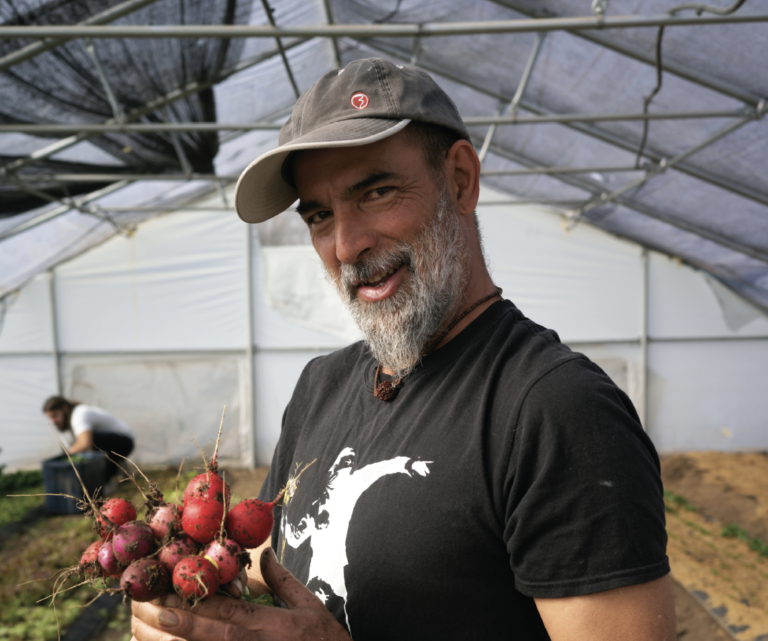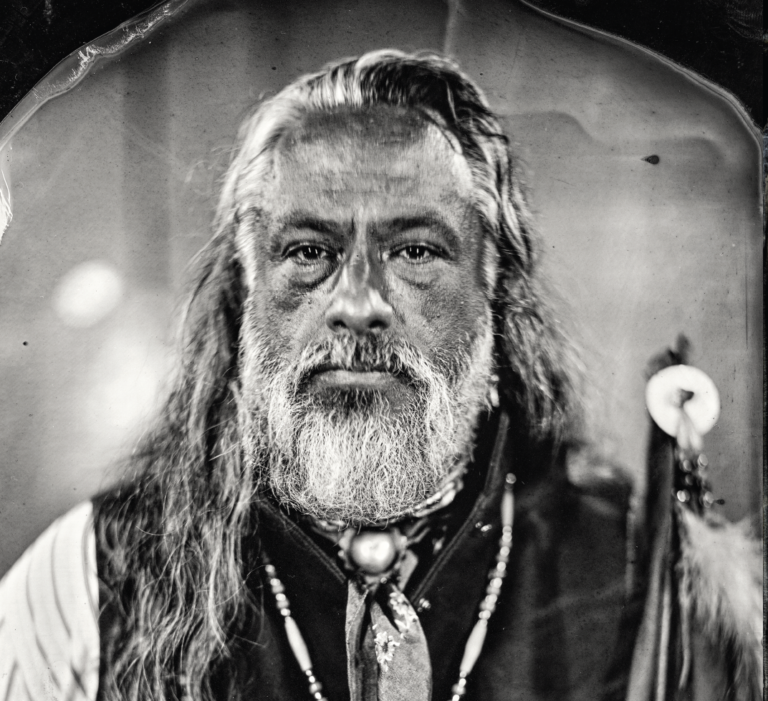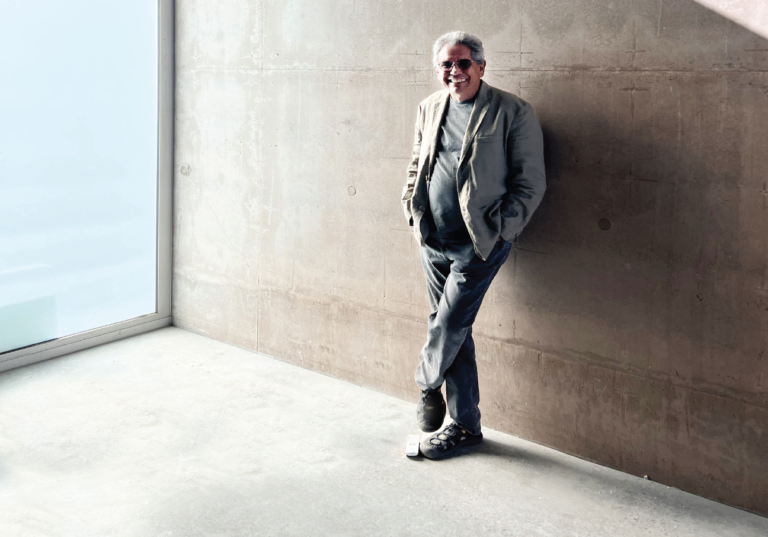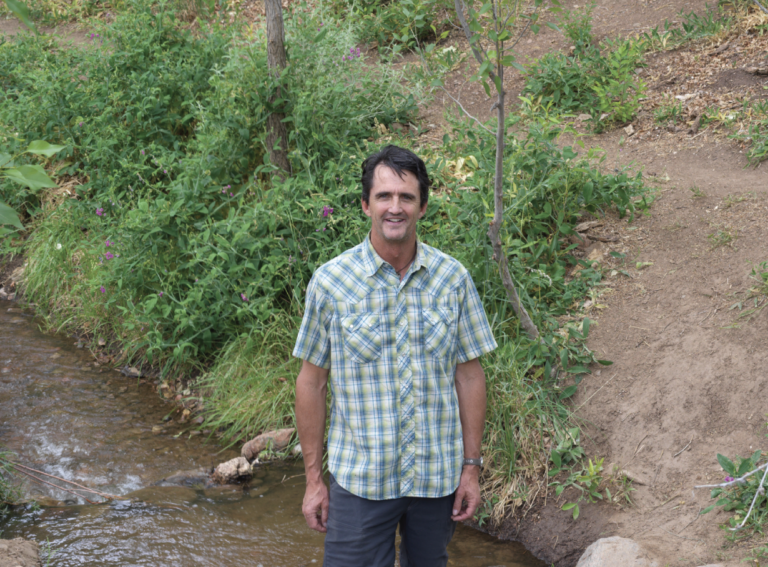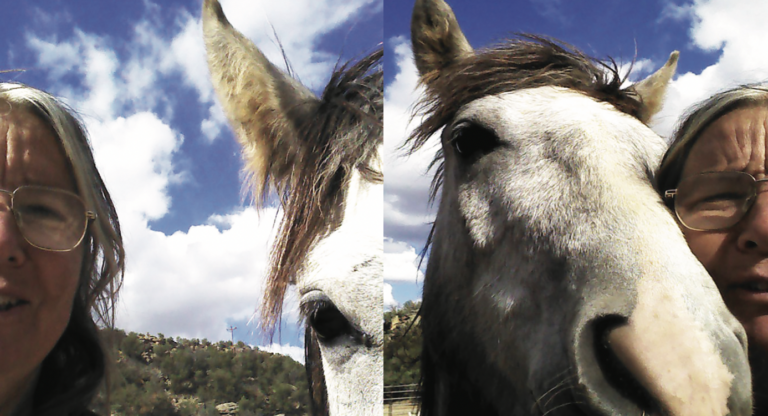THIS IS A GUY WHO WAS A FOUNDING PARTNER OF IDEO, the most innovative design company of the last 25 years. Their “design thinking” perspective led to everything from the reinvention of the shopping cart to new workplace designs for Netflix to Apple’s first mouse.
This is a guy who moved to Santa Fe to focus on a new company and a new, slower life.
Then it happened. He and his wife were heading home through monsoon rains – south on 285, just past Eldorado – when his whole world changed.
You guys designed the Apple mouse.
I was very lucky to work at IDEO. The whole design thinking is interesting because you basically get a room full of really cool, creative people to think about a design problem from totally different perspectives. In fact, if you’re designing a product, you may not have a traditional product designer. We would likely have apparel designers, car interior designers, psychologists, strategists – a complete range of creatives. None of them were Jony Ive.
It wasn’t about designing the cool thing, it was about the experience we were trying to get people to have.
Examples?
We started with products like the mouse but got more into experiences. Our economy has become less about objects and more about experiences. Take getting on an airplane. Could we have a different queuing system? A different choreography? We did a lot of models for Jet Blue.
What about the car buying experience? What if customers weren’t always stressed out? How do you help customers show up more informed, how do you be more transparent, how do you help them by explaining the steps of what they are about to go through?
So for Lexus, we created these situation rooms where we would surround the customer with all kinds of visual information that was relevant to who they were, their habits, how they drove. You do it with them. After you understand all of that, then you can think about the right fit in the car.
Today, I’m working with one of the major sports leagues on the whole idea of fan experience, of spectacle. How do you get beyond line management and crowd control, even beyond what happens on the field? Could the total experience look completely different? We’re always to reframe the problem so that it’s more human-based.
One of the reasons why Amazon has done so well is crowdsourcing a lot of information; no matter what you buy, it’s like, Oh, I can see other people who’ve gone through the same path that I have. That’s powerful.
So much better than “expert” reviews.
Right! So my wife and I are looking for a new vehicle now, and you have to plod through so much data, which raises a very interesting question. In the future, how will we parse through data to find what is relevant and useful to us? In the last 10 years, there’s been an explosion of data in the world. And with online research, it’s increasingly hard to figure out what’s real and what’s sponsored content. What happened to the fucking Good Housekeeping seal of approval?
So will AI help us wayfind? That’s what we hear. I have to say I worry about technology tricking us in the future. But my position has always been that technology is an enabler of human experience, so if we just make sure that we’re always talking about a human experience, I think we will be okay.
OK, so you plow through all of this data and decide you want to look at something. The other day, I went to Ford to look at Broncos. And the salesman was like, Don’t even look at that car. Supply chain problems, so you won’t get it until next year. Don’t even talk to me about that.
So I thought, okay, the car buying thing might take some time, and as long as we don’t rush it, we’ll get there.
But I think there’s this thing we have called the tyranny of convenience. Sadly, Amazon has really trained us that way. Recently, there was an article in The New York Times about the journey of convenience. They said maybe we need to pull back a little bit, not be so focused on immediate gratification, and not be so transactional – which is increasingly hard to do. We’re so tapped into our screens; it’s like, push a button and something happens.
We came from San Francisco, where Amazon packages come the same day. It’s kind of nice living here because everything is just a little bit slower. You kind of cool your jets and become a little more human.
That’s why I skateboard. Skateboarding is all analog. It’s all about kinesthesia, it’s all about situational awareness, it’s all about brotherhood. It’s really been the perfect antidote to all of this technology. You are in the moment. You are really present, paying attention.
That’s what we’re supposed to be doing, right? That’s life.
Yes. After a near-death experience, you stop, look around, and see what’s really going on.
Near-death experience?
Yeah. So my wife and I are in Cloud, our pickup. We’re driving down 285, heading home. Our dog is in the back, we are near Eldorado, close to home. And we are in the middle of a monsoon.
All of a sudden, there’s a flash and a crash. Very Roswell-like. It’s a blinding flash of white-blue light. It felt otherworldly and powerful, and this bright blast comes into the cab from every direction – from below us, down through the sunroof, from the left and right. Blazing blindness and, at the same time, an explosive crack of deafening thunder.
I was like, Wow, that was serious. We’re thinking a nearby transformer station was hit by lightning. So we’re shaken, but almost home, so we keep going.
Now I am increasingly aware of something awful unfolding. The truck begins to wobble wildly. I look at the dashboard – like a fucking Spielberg movie, all the sensors start flashing – Engine malfunction! Airbag deployment! Dead battery! No traction control! Flat tire warning! Low fuel! No brakes!
And then, everything goes black. So we have no motor, no power steering, no brakes, no lights, no wipers – remember, its dumping rain – and we’re still going 50 miles an hour down 285.
All of a sudden, we’re rocking back and forth, and there’s a deafening noise in the cab. We have a flat. So I wrestle our limping vehicle to the shoulder. The wheels grind to a dead stop, digging into the deep mud. We are mired.
Adisa my wife, is very pragmatic. I’m the emotional one, and I’m thinking, Are we goners? So Adisa impulsively places her hand on my heart to see if it is still beating. What has happened? Are we still here? Are we alive? We’re alive, right? Are we somewhere else?
And then I do the thing you’re not supposed to: I crack open the door, just to see what’s going on. Three of our tires had blown out. And on the sides of the truck were these burned spots, where it looked like an alien had touched us.
Pretty soon, the acrid smell of smoldering plastic enters through the cabin vents. The lightning increases, dropping bolts all around us. We sit there, feeling like metallic cooked geese, hyperventilating and waiting for the final fatal hit of life-ending electrocution. Our breathing fogs up the windows in anticipation, but it never comes.
So the truck gets towed away, and the following week, the forensics report from Toyota revealed we had been simultaneously hit in three spots while driving. These spots look like someone used an arc welder on the panels. The nearby strike morphed into a mesh of charged tentacles which enveloped the truck, racing around the structural cage of the vehicle, channeling the volts through all the wiring, deactivating the engine, melting our brakes, blowing out our tires, and going down into the ground.
And we were fine.
Is that because of the rubber tires?
Probably not. Tires today are composites, they’re not pure rubber. My friend Jay, who’s an electrician, explained it: In your house, you have 120-volt electricity. A lightning strike is 300 million volts. You should be dead.
Jay said we were very lucky we weren’t touching anything metal and that we didn’t have the window cracked open. Had we opened the back window slightly – as we usually do for our dog – we would have been toast.
One-tenth of a second. $41,000 worth of damage. Cloud, our truck, took the bullet. The only other casualty was my wristwatch – it stopped at the exact moment of impact. It’s an eerie souvenir, like a salad fork from the dining room of the Titanic.
For days after, I flinched at any bright crack of light within 10 miles. Then one evening, I’m walking my dog and realize maybe, just maybe, there is nothing to fear moving forward. Getting hit by lightning twice has to be statistically infinitesimal. Right?
So I’m thinking, Now what do you do with your life? What does life mean? I think I’m in extra innings, and I get to use my time as I wish. It’s kind of like the afterlife. It’s the old story of the hero’s journey with conflict, resolution, and rising above it with new eyes. That’s kind of where I am.
I get to elevate and appreciate what’s around me. I’m no longer obsessed with entitlement or cool things or being in the know. It’s really kind of a gift.
I’m so used to doing for the sake of doing. Now, I’m really trying to act with intention. And the skateboarding helps. Helps me be in it, be present – not passive, fear-based, or reactive. It’s not easy.
The writer Jim Harrison says “being present” is not easy, but it’s the only game in town.
Exactly. You know, it’s hard to talk about this. Especially in Santa Fe. There’s a lot of fuzziness around it, people in flowing dresses talking about “being present.”
I’ve gotten into earth-based art lately. James Turrell, Charles Ross, Michael Heizer, Andy Goldsworthy, those guys. There’s a lot there that’s empirical – it’s about an object, and there are feelings around that object. That’s maybe a way for people to elevate this discussion without sounding woo-woo.
It’s just hard to explain any of this stuff to people, but if you put someone in it, they’ll react. That’s what earth art does.
Andy Goldsworthy says we are nature.
That’s funny, a friend of mine was saying that to me the other day. It’s like, we are no different from that rock or that tree, we just think we’re something more.
Kerouac talks about how the mountains are buddhas, sitting there, patiently waiting for us to stop all our frettin’ and foolin’. It’s like we think we’re at the top of creation and rocks are at the bottom, but maybe it’s the opposite.
Totally right.
We’re in this nature-based cauldron. We are not above it, we are in it. That’s the thing about the scale of New Mexico – when you are out there in it, you’re like, Holy hell, I’m like an ant and the blackbirds. They know what the fuck is going on, and I’m just pretending like I have an idea.
There’s something very powerful here, a broader consciousness. I want to spend more and more time in nature, understanding the underlying patterns. Stay off the goddamn phone. It’s a cancer. It’s the stuff that will undo us if we’re not careful.
So I see a lot more now. The other day, my dog was barking at something in the garden, so I went in, and there was a tarantula. But instead of reacting, I just looked. What a fucking beautiful creature. They’re so elegant. They’re almost like runway models – they move with a certain sensuous composure. What I’ve been noticing is that I’m just trying to wake up to what’s happening around me instead of reacting or feeling fear. And not just when I see a tarantula. All the time.
Post-lighting strike, every time I hear a strike in the distance or the thunder rolling, it brings me back to right now. Wake up call! Achtung! Wake up call!
Lightning is now a reminder to wake up, a reminder that my time is increasingly short (time to get off my ass and back on my skateboard). And nature looms immense; its presence is now visible to me everywhere. I am no longer above it on asphalt roads or digital screens. I am fully in it.
Look, I’m not a religious person. But I’m like, What the fuck, let’s make the most of this. An old friend from IDEO told me, Don’t ever waste a crisis. Use it to your advantage.
Before he died, Warren Zevon said the thing he had learned in life was to enjoy every sandwich.
BOOM! There it is!
Learn more at harmonic55.com
Photo John Ravitch



